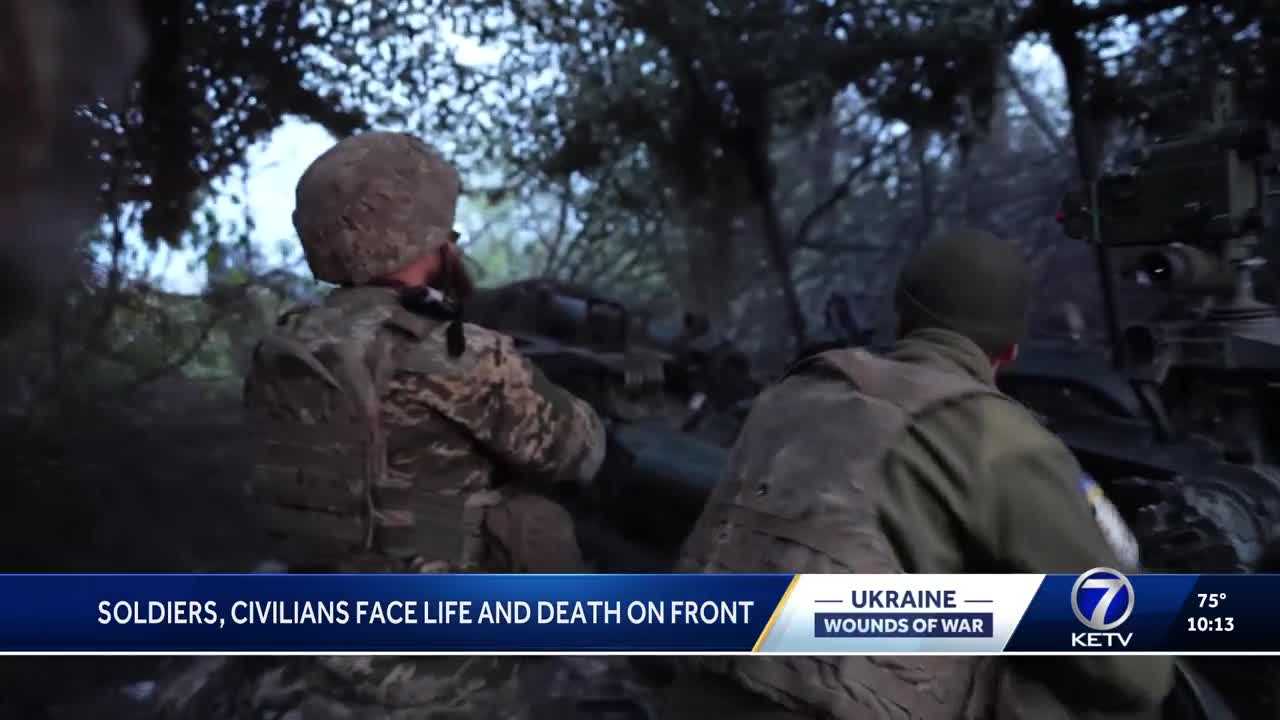The Unrelenting Struggle on the Front Lines
Across Ukraine’s rugged front lines, the sounds of war echo constantly—gunfire, explosions, and the hum of drones fill the air. Soldiers are on constant alert, their lives dictated by the rhythm of battle. “Be ready to get your shot on the Russians,” a commander shouted from an artillery position, his voice cutting through the night as camouflage cloaked their foxhole. “Without changes. Stand ready!”
More than three years into the full-scale conflict, Ukrainian soldiers face not only the horrors of war but also its monotony. Each day brings new challenges, and the emotional toll is immense. Above them, drones patrol the skies, scanning for any movement below. “We can see everything with the drones,” the artillery commander explained. These high-tech tools have become essential in modern warfare, allowing forces to monitor enemy positions and plan attacks.
The Russian offensive continues relentlessly, though it has stalled in many areas. Despite heavy losses, the invaders press forward, trading lives for small gains in territory. “Russians attack every day,” said Yurihy, a soldier who has seen the relentless assaults firsthand. “Every day, they move more than 500 meters or one kilometer.”
Not far from the front, former Nebraska State Senator Tom Brewer visited Ukraine for the fifth time in April and May. He observed the conditions at the frontline, reflecting on his own experience with artillery. “The spades have to be dug in deep so that it doesn’t move,” he said, recalling the challenges of manning the M777 howitzers. These weapons, which have been used to devastating effect, require careful positioning to avoid detection.
Living in cramped quarters, the crews hope for quiet nights, but the threat of retaliation is ever-present. “We normally have a requirement to move the cannon after three or four rounds because a radar will pick it up and give the trajectory back, and then they’ll return fire,” Brewer explained. However, moving the artillery is risky due to the constant drone surveillance. “If it moves, it dies,” one soldier said, highlighting the dangers of even minor movements.
In a nearby command hub, drone operators monitor the battlefield from screens, directing attacks and watching the results. “Come on, shoot them,” a soldier urged, pressing buttons as he watched over a squad of infantry advancing into a contested area. These operators, often young and inexperienced, deal with the psychological strain of seeing comrades fall. “The doctor is shot,” a radio operator reported, signaling the grim reality of their work.
Despite the challenges, the Ukrainian military remains resilient. Soldiers, artillery crews, drone operators, and support staff all play a role in holding back the Russian advance. “We are a strong country, with one of the best spirits,” Yuriy said. “If we don’t stop Putin here, it could continue in Europe.”
Yet, the war’s impact extends beyond the battlefield. Civilians near the front lines face daily hardships. In Rodynske, just five miles from Pokrovsk, residents rely heavily on aid deliveries from organizations like the Global Empowerment Mission. “It’s scary,” said Aryna, a local resident. “We tried to survive. We don’t have water. We don’t have electricity.”
The sounds of children playing have long disappeared, replaced by the constant noise of war. “We kind of get used to the cannons,” Aryna added, though the fear remains. A recent aid delivery brought 150 boxes of food, but it was not enough. The crowd grew restless, and a shoving match broke out as people struggled for supplies.
For many, the war feels endless. “I am not sure what to say,” Aryna sobbed. “I wish this war would stop as fast as it can. It’s very difficult to survive. We just want peace.”
As the conflict continues, the human cost grows heavier. From the front lines to the towns behind them, the people of Ukraine endure a daily apocalypse, clinging to hope and resilience in the face of overwhelming odds.







